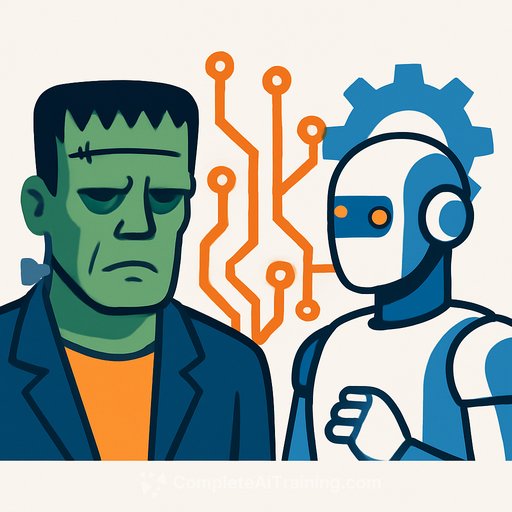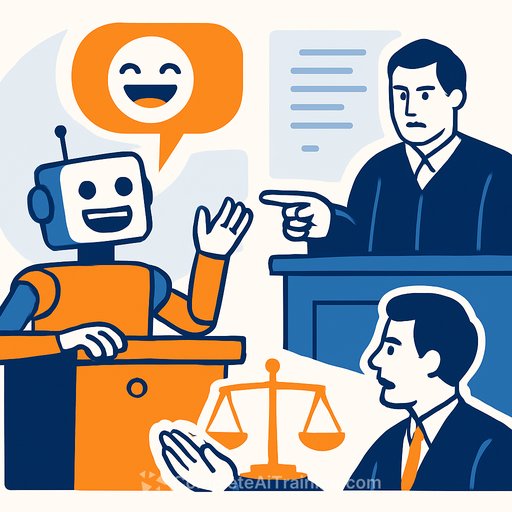Terror Frankenstein Reborn: A field guide for writers in the age of AI
Tonight, rubber bolts and green masks will flood the streets. The creature and his bride still walk - now backed by fresh screen myths: Guillermo del Toro's Frankenstein on Netflix (with Jacob Elordi as the creature and Oscar Isaac as the doctor), and The Bride! in March, led by Maggie Gyllenhaal with Jessie Buckley and Christian Bale.
But the book still outmuscles the movies. Every generation reads Frankenstein differently because its real subject is us - our ambitions, our blind spots, and the cost of progress taken too far.
Frankenstein is about authorship - and its consequences
Mary Shelley didn't write a screed against science. She wrote a warning about creators who sprint ahead without owning the fallout. Victor is the name of the scientist, not the monster. The creation is nameless - a mirror for whatever society fears most.
Since 1818, the novel has been a projection screen for new anxieties: first galvanism, later nuclear power and genetic engineering, and now AI and humanoid robots. The pattern holds: the danger isn't innovation itself but irresponsible rollout and denial of responsibility.
The modern lab: AI, robotics, and life extension
Today's tech ambitions echo Victor's arc. Neural implants on primates, hush-hush "superintelligence" labs, and fulfillment centers instrumented to the second - these projects inspire awe and alarm in equal measure. Leaders like Elon Musk, Mark Zuckerberg, and Jeff Bezos sit at the center of debates over risk, consent, and the treatment of workers alongside machines.
For writers, this is oxygen. The best horror starts as social non-fiction: systems that feel inevitable, decisions made far away, and externalities pushed onto the least powerful.
Write the monster like a pro: tools you can use right now
- Make the villain a system, not a person. Victor is ambition without accountability; your antagonist can be an incentive structure that forces bad choices.
- Give the creature a voice. The novel turns when we hear his story. Let the "product," model, or lab rat speak - logs, memos, worker notes, or a training dataset with agency.
- Use naming strategically. A nameless creation dehumanizes. A named one forces responsibility. Decide which pressure your story needs.
- Show the externalities. Who pays: test subjects, moderators, warehouse staff, patients, refugees from automation? Put their costs on the page.
- Make the ambition credible. Replace "mad genius" with KPI dashboards, board meetings, and a grant deadline. Reality is scarier than lightning.
- End with consequences, not speeches. Regulation, recall, revolt, or restitution - pick one and land hard.
A simple framework you can plug into any draft
Act I - Creation: A credible breakthrough meets a personal wound (status, grief, envy). The prototype lives, and the creator hides a corner-cut.
Act II - Fallout: The system scales. Benefits soar; harms spread sideways. The creature learns faster than its author.
Act III - Reckoning: The bill arrives. Choose: confession, containment, or catastrophe. Make the choice cost something real.
Modern motifs that map cleanly from Shelley
- Electricity → Compute: Swapped lightning for energy budgets, data centers, and heat maps.
- Grave-robbing → Data scraping: Bodies then, datasets now. Consent is the ethical hinge.
- Gothic isolation → Corporate secrecy: Attic labs become clean rooms and NDAs.
- The Arctic chase → Regulatory cat-and-mouse: Jurisdiction shopping as the new ice floe.
Rapid research, zero fluff
Read the source that started it all. The public-domain text is here: Frankenstein; or, The Modern Prometheus.
Building pieces that critique AI or use its tools? Curate what's useful, skip the hype. This roundup is a clean starting point: AI tools for copywriting.
Prompts and pitches for your next draft
- Write a scene where an AI model files a complaint about its training data - and the legal team tries to give it a "non-person" status.
- Profile a warehouse shift as a creature story: every sensor "stitches" the worker's day together until they no longer recognize their own pace.
- Pitch: "The New Galvanists" - modern experiments that flirt with reviving tissue, memory, or reputation, and the safeguards they skip.
- Short op-ed angle: "Stop naming models. Start naming the costs."
Why this story keeps winning
Mary Shelley wrote from a city of soot, poverty, and spectacle. She read names off tombstones, watched experiments with electricity, and saw bodies turned into supply. That tension - awe and dread - is the vein that still pays.
So light a lamp. Revisit the original. Then write the version only you can write: less thunder, more accountability; less monster mask, more human price.
And if you need a soundtrack for revision: The Cramps asked a question that still cuts - How Far Can Too Far Go?
Your membership also unlocks:






